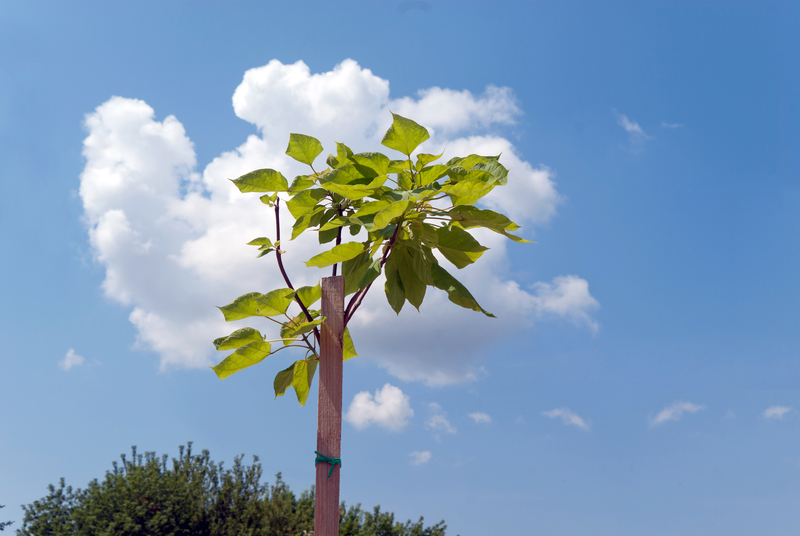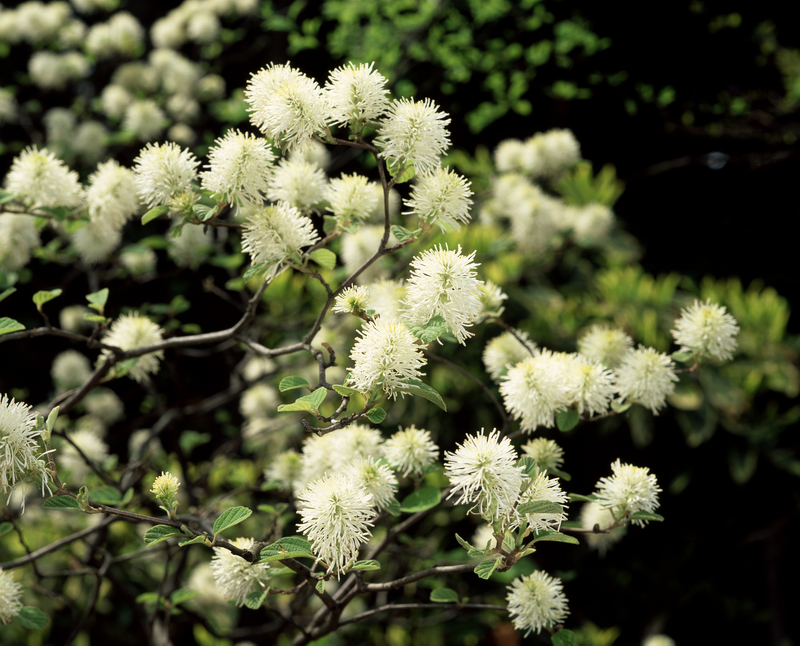From Backyards to Planets: Gardening to Reduce Climate Impact
Posted on 26/06/2025
From Backyards to Planets: Gardening to Reduce Climate Impact
Gardening has long been a beloved pastime for many, but today, it is more than a hobby--it's a strategy against climate change. Whether you tend a small backyard plot or join community green spaces, your green thumb can help heal the planet. This comprehensive guide explores how sustainable and climate-friendly gardening practices can mitigate emissions, promote biodiversity, and inspire community-wide transformations. Ready to turn your garden into a planet-saving force? Dive in!
The Science: How Gardens Affect the Climate
Before digging into practical steps, let's understand the science behind eco-friendly gardening and its climate impact.
- Carbon Sequestration: Plants absorb CO2 during photosynthesis and store it in their biomass and the soil--removing greenhouse gases from the atmosphere.
- Biodiversity Support: Diverse gardens provide habitat and food sources for pollinators and wildlife, stabilizing ecosystems.
- Soil Health: Healthy, undisturbed soils act as significant carbon sinks, storing organic material.
- Heat Island Mitigation: Urban gardens and trees lower local temperatures by providing shade and enhancing transpiration.
These mechanisms may seem small on an individual scale, but when multiplied by millions of gardens worldwide, the effect is powerful.
How Traditional Gardening Contributes to Climate Change
Standard gardening practices can inadvertently worsen the climate crisis. Consider the following:
- Chemical fertilizers and pesticides: These are energy-intensive to produce and release nitrous oxide, a potent greenhouse gas.
- Lawn maintenance: Gas-powered mowers and overwatering lawns contribute significantly to carbon emissions and water waste.
- Peat-based composts: Peat extraction destroys crucial carbon sinks in wetland areas.
Switching to sustainable and low-impact gardening methods is vital to reversing these effects and generating positive outcomes for the earth.

Backyard Solutions: Steps You Can Take
You don't need vast acreage to join the fight against climate change. Here's how you can transform your backyard garden into a climate ally:
1. Composting for Carbon Capture
Composting is an excellent way to recycle organic waste and enrich your soil. By returning food scraps and garden trimmings to your garden, you:
- Reduce landfill waste (methane producer)
- Enhance soil health and carbon storage
- Decrease dependence on synthetic fertilizers
Start a simple compost bin with kitchen scraps, leaves, and grass cuttings. Maintain a good balance between "greens" (nitrogen-rich) and "browns" (carbon-rich) materials, and turn the pile regularly.
2. Planting Trees and Shrubs
Trees are among the most potent carbon sinks on earth. Even a single tree in your yard can sequester tens of kilograms of CO2 per year. Native trees and shrubs are best, as they support local wildlife and require less maintenance.
- Choose species adapted to your local climate and soil.
- Plant densely to maximize carbon storage and shade.
3. Embrace Native and Pollinator-Friendly Plants
Plant diversity is crucial for resilient, low-maintenance gardens. Native plants thrive with minimal care, resist pests naturally, and support pollinators. Consider including:
- Flowering perennials and annuals
- Grasses and groundcovers
- Edible crops like berries or herbs
These plants increase soil carbon storage while feeding bees, butterflies, and birds--all essential to ecosystem stability and food crop pollination.
4. Reduce, Replace, or Rethink the Lawn
Lawns are ecological deserts, demanding water, fertilizer, and frequent mowing. For a more climate-friendly garden:
- Reduce lawn area in favor of native plant beds, vegetable plots, or wildflower meadows.
- Replace grass with low-mow or no-mow alternatives.
- Let a section "rewild" for pollinators and soil health.
5. Water Wisely
Water scarcity is escalating due to climate change. Help conserve this vital resource:
- Install rain barrels to capture stormwater.
- Mulch plantings to retain moisture and suppress weeds.
- Choose drought-tolerant plants.
- Water early morning or late afternoon to minimize evaporation.
Efficient irrigation can also reduce the energy needed to pump and treat water--another indirect way your garden fights climate change.
6. Eliminate Fossil Fuel Use
Switch gas mowers and trimmers for electric or--better yet--manual tools. Maintain a "no-till" approach to avoid releasing carbon stored in the soil.
- Avoid synthetic fertilizers; use organic compost and mulch.
- Support renewable energy for irrigation if feasible.
Edible Gardens: Reducing Food Mile Emissions
One of the greatest climate benefits comes from growing your own food. Consider these facts:
- The average produce item travels 1,500 miles or more before reaching your plate ("food miles").
- Home gardens cut down emissions from transportation, refrigeration, and plastic packaging.
- You control the use of pesticides and fertilizers, opting for sustainable alternatives.
Starting even a small vegetable patch or herb spiral can make a big difference in your personal carbon footprint.
Community Gardens and Urban Initiatives
You don't need a backyard to participate in climate-conscious gardening. Urban spaces can host community gardens, rooftop farms, and edible landscapes. These efforts offer multiple benefits:
- Strengthening local food systems and resilience
- Educating the public on sustainable practices
- Increasing neighborhood green space, cleaning the air, and cooling heat islands
Getting involved in a community garden is also an excellent way to meet like-minded people and multiply your impact.
Biodiversity: The Secret Weapon of the Climate Gardener
A garden is more than the sum of its plants. Biodiverse gardens are less susceptible to pests and diseases, need fewer chemicals, and cycle nutrients more efficiently. Key strategies include:
- Planting a Mix: Combine trees, shrubs, annuals, perennials, edibles, and flowers.
- Layered planting: Mimic natural ecosystems with groundcovers, mid-story plants, and overhead canopy.
- Leave dead wood and leaf litter to feed soil microbes and shelter insects.
This "rewilding" approach creates more resilient urban and suburban landscapes that better resist climate extremes.
Climate-Friendly Gardening in Practice: Case Studies
The Edible Forest Garden
A leading example of gardening for climate change mitigation is the food forest--a multi-layered garden designed like a natural forest, but with mostly edible or useful plants. In addition to storing five to ten times more carbon than a standard vegetable patch, these systems require less input once established and provide diverse harvests.
Permaculture in Urban Spaces
Permaculture is a set of design principles aimed at creating closed-loop, self-sustaining gardens and landscapes. Urban permaculture sites in cities like London, Melbourne, and New York have turned vacant lots into bio-diverse oases, mitigating carbon emissions at the neighborhood scale.
Barriers and Solutions: Making Gardening Accessible
For many, gardening may seem out of reach due to limited space, resources, or know-how. Overcoming these barriers is essential for a wider climate impact:
- Limited Space: Use containers, vertical gardens, or rooftop spaces. Window boxes can grow herbs and pollinator flowers.
- Lack of Experience: Many local community gardens and online groups offer workshops, mentorship, and starter kits.
- Resource Constraints: Seed exchanges, compost giveaways, and tool libraries minimize cost while fostering community spirit.
From Local to Global: Gardening's Planetary Reach
While gardens start local, their impact is global. As people around the world adopt climate-smart gardening practices, collective action can:
- Reduce overall demand for industrial agriculture (a major climate culprit)
- Restore degraded soils and prevent erosion
- Support pollinators critical for worldwide food production
- Inspire policy shifts towards greener cities and urban agriculture incentives
International Movements and Networks
Many global initiatives encourage gardening to reduce climate impact, such as:
- The Transition Network: Fosters grassroots, sustainable communities through food growing and energy projects.
- The Great Green Wall (Africa): Planting trees across the Sahel to sequester carbon and support livelihoods.
- Urban Agriculture Policies: Cities like Toronto, Singapore, and Paris now prioritize edible landscaping and rooftop farming.
As these efforts scale, they serve as models for towns and cities everywhere, from backyards to planets.
Action Plan: Gardening to Reduce Your Climate Impact
- Start with Soil: Test and amend with compost; avoid tilling when possible.
- Plant for the Future: Choose long-lived perennials and native trees alongside annual crops.
- Garden Organically: Ban synthetic chemicals in favor of mulches, compost teas, and integrated pest management.
- Save Water: Mulch, collect rainwater, and irrigate efficiently.
- Support Pollinators: Plant a succession of blooms and avoid pesticides harmful to bees and butterflies.
- Reconnect with Community: Join or start a local gardening group or support urban agriculture projects.
- Share Your Success: Inspire others by posting your climate-friendly garden pictures and tips online.

Conclusion: Garden Today, Save Tomorrow
From backyards to planets, the act of gardening is a potent remedy for our changing climate. Through gardening to reduce climate impact, individuals and communities regenerate soils, support wildlife, draw down carbon, and foster local resilience. Your next planting--no matter how small--is a contribution to a cooler, greener future.
So grab your spade and gloves, and let your garden grow--for the earth, the climate, and future generations to come.
Frequently Asked Questions
- Which plants absorb the most carbon dioxide?
Trees, particularly fast-growing native species, absorb the most CO2. Deep-rooted perennials and prairie grasses also sequester significant carbon in the soil. - Is it better to grow vegetables or plant trees for climate action?
Both are beneficial. Trees store more carbon long-term, while vegetable gardening reduces food transport emissions and supports biodiversity. - What are five easy ways to make my garden more eco-friendly?
Compost waste, plant natives, reduce lawn, avoid chemicals, and capture rainwater. - How does community gardening reduce climate impact?
By producing local, fresh food, green spaces cool cities, and fostering environmental education and engagement.
By weaving together sustainable practices and shared knowledge, gardens everywhere can play a significant role in the global response to climate change. Start today--your backyard can make planetary change.

